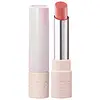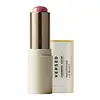Sephora Collection About That Shine Sheer Shine Lipstick Versus Versed Cashmere Color Smoothing Lip Blush
What's inside
What's inside
 Key Ingredients
Key Ingredients

 Benefits
Benefits

 Concerns
Concerns

 Ingredients Side-by-side
Ingredients Side-by-side

Bis-Diglyceryl Polyacyladipate-2
EmollientOctyldodecanol
EmollientMethyl Hydrogenated Rosinate
PerfumingHydrogenated Polydecene
EmollientHydrogenated Styrene/Methylstyrene/Indene Copolymer
Polybutene
Ricinus Communis Seed Oil
MaskingC12-15 Alkyl Benzoate
AntimicrobialCera Microcristallina
Emulsion StabilisingSynthetic Wax
AbrasiveZea Mays Starch
AbsorbentEthylene/Propylene Copolymer
AbrasiveCalcium Aluminum Borosilicate
CI 77891
Cosmetic ColorantSynthetic Fluorphlogopite
Butyrospermum Parkii Butter
Skin ConditioningLimnanthes Alba Seed Oil
Skin ConditioningStearalkonium Hectorite
Gel FormingAlumina
AbrasiveCI 77491
Cosmetic ColorantParfum
MaskingCI 77492
Cosmetic ColorantPropylene Carbonate
SolventMangifera Indica Seed Butter
Skin ConditioningHelianthus Annuus Seed Oil
EmollientAmmonium Glycyrrhizate
MaskingCI 15850
Cosmetic ColorantCI 77499
Cosmetic ColorantPentaerythrityl Tetra-Di-T-Butyl Hydroxyhydrocinnamate
AntioxidantGlyceryl Stearate Citrate
EmollientTocopherol
AntioxidantAscorbyl Tetraisopalmitate
AntioxidantSqualene
EmollientBeta-Sitosterol
Emulsion StabilisingTin Oxide
AbrasiveBis-Diglyceryl Polyacyladipate-2, Octyldodecanol, Methyl Hydrogenated Rosinate, Hydrogenated Polydecene, Hydrogenated Styrene/Methylstyrene/Indene Copolymer, Polybutene, Ricinus Communis Seed Oil, C12-15 Alkyl Benzoate, Cera Microcristallina, Synthetic Wax, Zea Mays Starch, Ethylene/Propylene Copolymer, Calcium Aluminum Borosilicate, CI 77891, Synthetic Fluorphlogopite, Butyrospermum Parkii Butter, Limnanthes Alba Seed Oil, Stearalkonium Hectorite, Alumina, CI 77491, Parfum, CI 77492, Propylene Carbonate, Mangifera Indica Seed Butter, Helianthus Annuus Seed Oil, Ammonium Glycyrrhizate, CI 15850, CI 77499, Pentaerythrityl Tetra-Di-T-Butyl Hydroxyhydrocinnamate, Glyceryl Stearate Citrate, Tocopherol, Ascorbyl Tetraisopalmitate, Squalene, Beta-Sitosterol, Tin Oxide
Triheptanoin
Skin ConditioningCaprylic/Capric Triglyceride
MaskingSilica
AbrasiveOctyldodecanol
EmollientSynthetic Wax
AbrasiveIsostearyl Isostearate
EmollientSorbitan Olivate
EmulsifyingCI 77220
Cosmetic ColorantPolyhydroxystearic Acid
EmulsifyingStearalkonium Hectorite
Gel FormingDiisostearyl Malate
EmollientButyrospermum Parkii Butter
Skin ConditioningPolyglyceryl-2 Triisostearate
EmulsifyingSorbitan Isostearate
EmulsifyingPropylene Carbonate
SolventIsostearic Acid
CleansingLecithin
EmollientPolyglyceryl-3 Polyricinoleate
EmulsifyingCamellia Japonica Seed Oil
EmollientSimmondsia Chinensis Seed Oil
EmollientIron Oxides
CI 15850
Cosmetic ColorantTitanium Dioxide
Cosmetic ColorantCI 77492
Cosmetic ColorantCI 45410
Cosmetic ColorantCI 15985
Cosmetic ColorantCI 42090
Cosmetic ColorantTriheptanoin, Caprylic/Capric Triglyceride, Silica, Octyldodecanol, Synthetic Wax, Isostearyl Isostearate, Sorbitan Olivate, CI 77220, Polyhydroxystearic Acid, Stearalkonium Hectorite, Diisostearyl Malate, Butyrospermum Parkii Butter, Polyglyceryl-2 Triisostearate, Sorbitan Isostearate, Propylene Carbonate, Isostearic Acid, Lecithin, Polyglyceryl-3 Polyricinoleate, Camellia Japonica Seed Oil, Simmondsia Chinensis Seed Oil, Iron Oxides, CI 15850, Titanium Dioxide, CI 77492, CI 45410, CI 15985, CI 42090
Ingredients Explained
These ingredients are found in both products.
Ingredients higher up in an ingredient list are typically present in a larger amount.
This ingredient is also known as shea butter. It is an effective skin hydrator and emollient.
Emollients help soothe and soften your skin. It does this by creating a protective film on your skin. This barrier helps trap moisture and keeps your skin hydrated. Emollients may be effective at treating dry or itchy skin.
Shea butter is rich in antioxidants. Antioxidants help fight free-radicals, or molecules that may harm the body. It is also full of fatty acids including stearic acid and linoleic acid. These acids help replenish the skin and keep skin moisturized.
While Shea Butter has an SPF rating of about 3-4, it is not a sunscreen replacement.
Shea butter may not be fungal acne safe. We recommend speaking with a professional if you have any concerns.
Learn more about Butyrospermum Parkii ButterCi 15850 is the pigment color red. It is an azo dye and created synthetically.
Azo dyes need to be thoroughly purified before use. This allows them to be more stable and longer-lasting.
This ingredient is common in foundations, lipsticks, and blushes. This color is described as brown/orangey red.
It has many secondary names such as Red 6 and Red 7. According to a manufacturer, Red 6 usually contains aluminum.
Learn more about CI 15850Ci 77492 is also hydrated iron III oxide. It's sole purpose is to give a yellow hue to products.
Iron III oxides are classified as inorganic chemicals for coloring.
Synthetically created Ci 77492 is considered safer than those naturally found. This is because the synthetically created version may contain less impurities. Iron oxides are generally non-toxic and non-allergenic.
Learn more about CI 77492Octyldodecanol is a fatty alcohol. It is primarily used to enhance the texture of products.
As an emulsifier, Octyldodecanol helps prevent the oils and waters from separating. It also prevents ingredients from creating foam when shaken.
Octyldodecanol is created by reducing fatty acid to an alcohol.
Due to its high molecular weight, it does not get absorbed into the skin.
Learn more about OctyldodecanolThis ingredient is a solvent. It helps dissolve active ingredients and alter the texture of products.
Propylene Carbonate is commonly used in makeup and with clay, such as montmorillonite or bentonite.
Studies show this ingredient to be safe for cosmetics. When it is undiluted, it can cause skin irritation. (It is always diluted in skincare and makeup). This ingredient is water-soluble.
Propylene Carbonate is created from propylene glycol and carbonic acid.
Learn more about Propylene CarbonateStearalkonium Hectorite is a clay-derived ingredient used to thicken a product and help create a gel-like texture.
Synthetic Wax is created from fossil fuels such as natural gas. It is used to enhance texture, adjust pH, and as an occlusive.
It may also be used as an abrasive ingredient to exfoliate the skin.
Synthetic Wax may not be fungal acne safe.
Learn more about Synthetic Wax